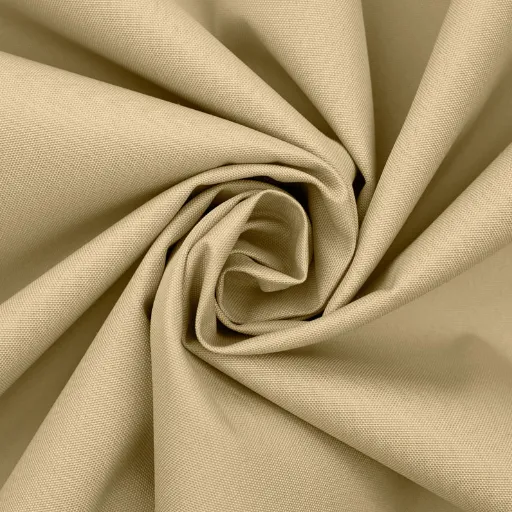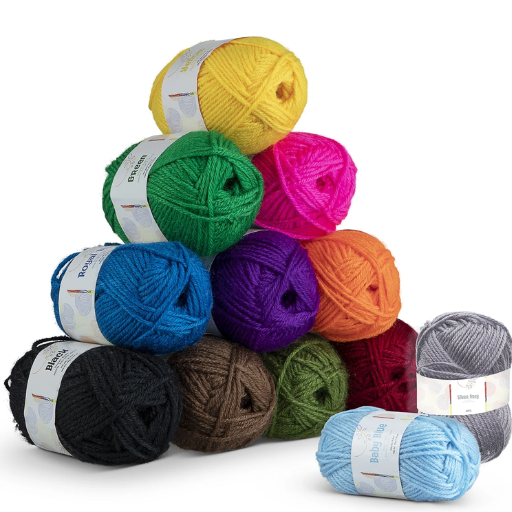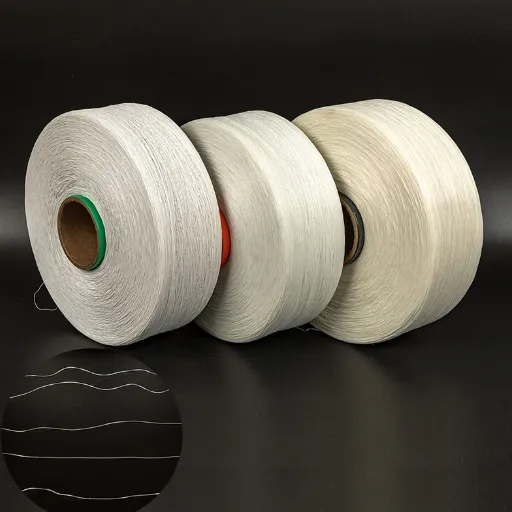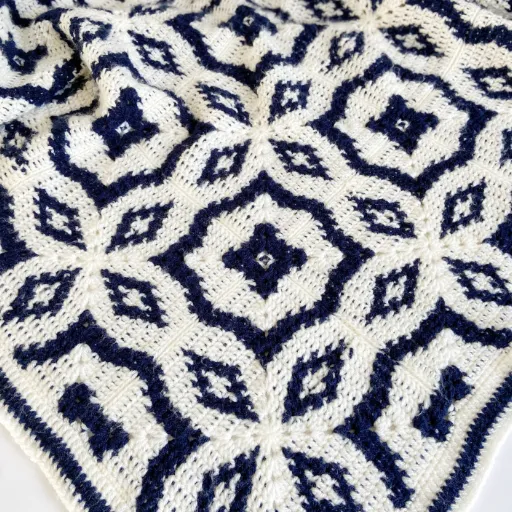Choosing the right fabric for clothes, upholstery, or any other day-to-day items, requires one to have complete knowledge of its components. Two skirts made of cotton and polyester reveal the property of thickness and durability while also posing performance-related questions to the beholder. Is the synthetic composition of polyester responsible for weighing it down? In this post, we strive to be more specific with our answers so our readers can understand their requirements better. No matter what your considerations are, be it durability or range of use, this article will increase your understanding and help you decide which to use.
What is the Difference Between Polyester and Cotton?
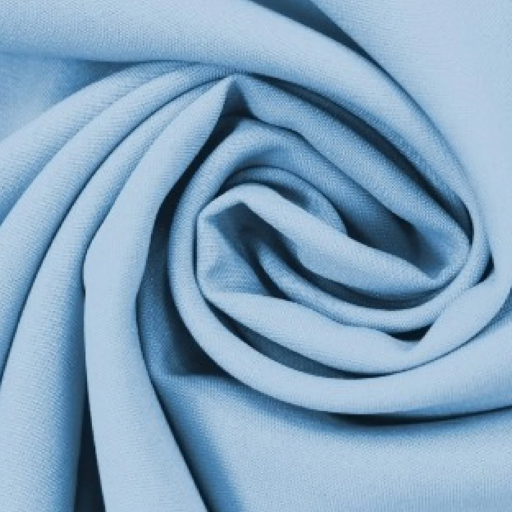
Polyester and cotton are fabrics which differ in the raw materials used to make them, their feel, use case, and functionality. Cotton comes from the cotton plant which has seeds, thus making it a natural fiber. It has its specific advantages which includes: soft to touch, light, can regulate temperature and absorbs moisture well. This works best for comfort, is suitable to hotter areas, and those with delicate skin. On the other hand, it can easily get wrinkles and the fabric can shrink after washing.
Polyester is still relatively new compared to other fibers. It’s made from products such as crude oil which means it qualifies as a synthetic fiber. It is light, easy to maintain, and even does not shrink, stretch, or wrinkle. For people who enjoy sports, polyester is ideal since it dries up faster and does not pale in color. On the downside, polyester does not breathe well and skims off the top when compared to cotton, which means it feels more sweaty and retains bad smells more easily.
If your focus is durability and performance, then cotton and polyester synthetics differ on comfort and sustainability.
Is Polyester a Synthetic Fiber?
Polyester is made of synthetic materials from crude oil under a polymerization reaction. The ‘plastic’ used in producing polyester is made in chemical processes from petroleum base materials. One of which, polyethylene terephthalate or polyethylene terephthalate (PET), is a polymer made out of oil. Monomer blending occurs during chemical reactions, with each polymer being able to create a long and strong molecular structure. It has allowed for its use in textiles to be extended and changed through advances in technology to be employed in industrial fields with ropes, plastic containers, or even films. Сontrary to its favorable properties, not being biodegradable is problematic for the mounting concern regarding sustainability.
What Are the Properties of Cotton?
Cotton is a well-known a natural fiber in the textiles industry for its exquisite rarity and breathability. It is one of the most used materials from for its pads or clothing. The composition of cotton is made up primarily of cellulose which provides it strength and durability and also ease. An important characteristic of cotton is the amount of moisture it can absorb when it is metabolically warmed. It also alleviates sweat and is ideal in warmer places. It is also hypoallergenic. In presumes such as children which is prone to having sensitive skins is perfect for them.
How Do Polyester and Cotton Compare in Thickness?
When analyzing thickness with regards to polyester and cotton, the difference in their fibers and how they’re processed explains it all. A synthetic material, polyester can be engineered to a thinner more uniform weave for specific uses, resulting in lightweight fabrics with high tensile strength which are common in sportswear and outdoor apparel. Being natural, cotton has a thicker and more irregular fiber structure. Also, the thickness of cotton can be more or less depending on the thread count, type of cotton (Egyptian or Pima) and the weave style (twill or plain weave).
As a rule, polyester performs better than cotton in achieving a finer, thinner construction with maintaining strength and durability. Thin cotton fabrics, which are used for shirts, the grams per meter squared g/m2, or weight, are 100-200. This is a garment designed as light but comforting (soft) and allows air circulation for the body. On the contrary, lightweight polyesther fabrics (used for sports) is between 30 and 120 g/m2. In the field of technology polyesther blended with cotton to provide the garments with adequate softness, comfort, and strength. Therefore, it is crucial to determine which fabric to use for a specific purpose such as comfort, breathability and durability.
What Are the Properties of Polyester Fabric?
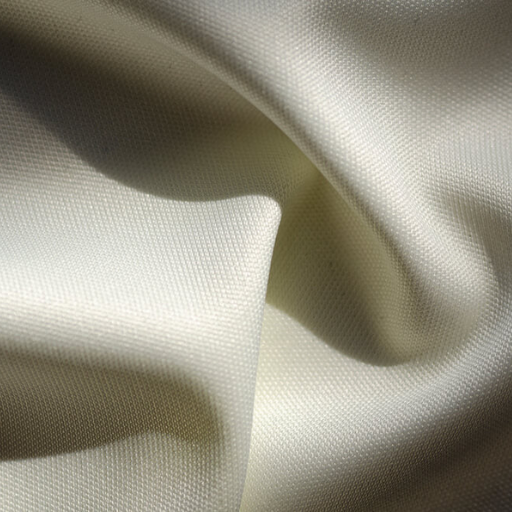
Fabrics made of polyester score incredibly high when it comes to their strength, wear any property of elongation ro pulling apart. Because it does not shrink much in size and does not lose its shape easily, the fabric is incredibly cotton and textile friendly in the long run. Furthermore, polyester provides remarkable advantages such as moisture-wicking or quick drying, while maintaining its form during multiple washes. As noted, lighter garments made of polyester fabrics are far more comfortable to wear, especially on the neck area. The con to polyester is that while its lighter than cotton, it does not allow airflow through as efficiently comparable to the natural fibers. This is often offset due to the modern methods of manufacturing which help blend to increase the softness of the fabric.
Characteristics of Polyester Fibers
- High Strength and Durability
Cotton is a natural fiber, and polyester gives increased durability with extreme resistance to stretching, tearing, and other mechanical stressors. Polyester provides strength under repeated use and harsh conditions. The World Bank indicates the breaking tenacity for polyester fibers averages from 4-7 grams per denier, significantly more durable than natural fibers such as cotton.
- Wrinkle and Shrink Resistance
Garments made from polyester require less maintenance because the fabric undergoes minimal deformation through washing and drying cycles. The synthetic materials also reduce the risk of the garment shrinking or wrinkles forming, eliminating the need for ironing or maintenance altogether.
- Moisture Resistance and Quick-Drying Properties
Polyester is a type of fiber with unique properties. It is hydrophobic and only absorbs 0.4%–0.8% moisture. Because of this, the material is quick to dry and does not absorb water. This makes polyester useful for outdoor clothing and athletic wear.
- Thermal Stability
Polyester has an excellent thermal stability and its application is important as it does not exceed the melting point of 250 °C (482 °F). These features make it useful for industrial fabric needs.
- Chemical Resistance
Cotton and polyester blended fabrics have proven beneficial forpassing a favorable sturdiness breathability ratio. Since blended cotton sock relies on the cushioning, Cotton blended with polyester withstands a harsh scrub with acids and alkalis. Under normal conditions, these blended polyester sock materials do not degrade giving them superior durability alongside sturdiness.
Benefits of Using Polyester Fabric
- Durability and Longevity
Due to its specific composition, polyester’s tensile strength varies from 2.5 to 9.5 grams per denier, to combined insufficient weight of polyester being 0.1% its craftsmanship. Further adding to polyester’s advantages, its long-lasting performance is not affected as polyester fabrics do not easily experience tears or abrasions. Thus, polyester is suitable for outdoor gear, upholstery, and workwear.
- Moisture Resistance
Polyester is hydrophobic as it repels water, dampened polyesters dries fast compared to other materials. Under standard conditions, polyester regains moisture of approximately 0.4%, while natural fibers such as cotton stands at 8%. This aids in retention making polyester useful for sportswear and garments worn in wet or physically demanding conditions.
- Low Maintenance
Thanks to wrinkling resistance, polyester fabrics retain the shape and appearance with very little care. Most often, they do not require ironing and remain smooth after several washes. In addition, high resistance to shrinkage reinforces long term dimensional stability.
- Lightweight with High Dimensional Stability
With a lightweight feature and a density of 1.38 grams per cubic centimeter, polyester is a convenient option while still upkeeping durability. Materials like sails, tents, and industrial grade conveyor belts now have reliable stretch free fibers. These are gaining excellent fabric fibers as they stand against elongation proving to keep their shape intact under weighted pressure.
- Color Fastness
Due to its synthetic nature, polyester can easily be dyed which allows the use of disperse dyes that bond chemically with the fibers ensuring polyester vibrant and long-lasting colors Fabrics created with polyester do not fade easily due to sunlight while being resistant to washing and have a colorfastness rating above 4 (with 5 being the best).
Because of these advantages, polyester has become widely accepted as a basic fabric needed for many industries where great dependability and efficiency are required along with the ability to perform under varying conditions.
What Are the Properties of Cotton Fabric?
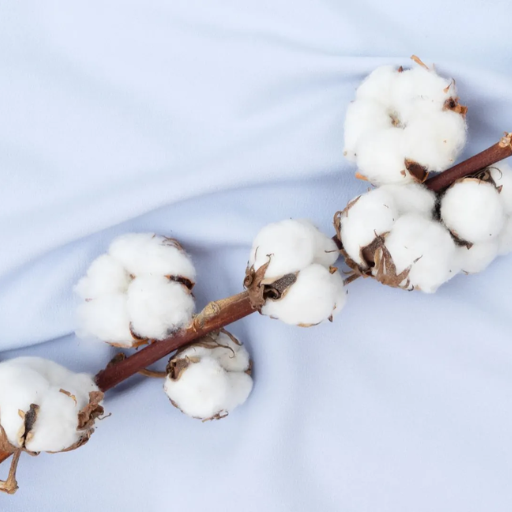
Cotton fabric is known for its softness, breathability, and comfort, making it ideal for a wide range of applications, including clothing and household textiles. It is highly absorbent, capable of retaining moisture effectively, which enhances its usability in warm climates. Cotton is also biodegradable and environmentally friendly compared to synthetic fabrics. However, while it is durable under normal use, cotton tends to wrinkle easily and can shrink if not properly pre-treated. Additionally, it has moderate resistance to wear and tear, which may reduce its longevity under heavy use.
Characteristics of Cotton Fiber
- Moisture Absorbency
Capturing moisture vapour cotton fibers enables capturing vapour-weight upto 27 times, making it ideal for use in Textiles and Household Items like towels and bed-sheets especially in hot humid regions.
- Breathability
Due to natural qualities with a structure which is porous, cotton allows easy passage of air through its fibers. This characteristic offers breathability which is of great importance to its comfort and cooling effect while wearing it.
- Softness
Dead skin cells from the body can be gently scrubbed and Cotton can do that very well. This makes knowing how to remove the dead skin from the body very important. Moreover, soft things can also be very comfortable to wear. Because of that, the coating for pillow and bedding should be made out of soft material. Children can benefit tremendously from to having soft clothing and bed covering.
- Durability
Not the strongest of natural fibers, cotton does demonstrate reasonable durability under normal wear and when spun into yarns. Dry conditions will see the fiber’s tensile strength reach around 3.0 to 5.0 grams per denier. Wet conditions can strengthen the fiber by up to 20%.
- Heat Resistance
Cotton is well known to tolerate heat; it can endure high temperatures during washing and ironing without considerable damage. This attribute makes cotton practical for items that require frequent washing and sanitization.
The combination of these characteristics enhances cotton’s appeal as one of the most versatile and widely accepted fibers, preferred by Industries and consumers around the world.
Benefits of Cotton Fabric for Garments
- Breathability and Moisture Absorption
Maintaining airflow through its fibers cotton is breathable, which helps maintain body temperature and excessive perspiration. Also, moisture buffering maintaining improved comfort in wear, because cotton can absorb moisture up to 27 times its weight.
- Hypoallergenic Properties
Because cotton fabrics do not contain chemical switches and allergens, they are not likely to stir up a reaction or irritation, and are hypoallergenic. This makes it handy for the eczema-affected people. Moreover, organic cotton usage protects one from the chemicals during laundering and garment construction.
- Durability and Longevity
Apparel made of cotton has exceptional durability. This is attributed to the strength of their natural fibers. The tensile strength of cotton ranges from 3.0 to 4.9 grams per denier when dry (which is quite robust); therefore, the garments will withstand wear and tear over lengthy use. Moreover, cotton tends to increase in strength of 10% to 20% when wet, which allows for multiple washes without significant damage.
- Sustainability and biodegradability
There are eco-friendly as well as health-related benefits too since cotton is a renewable source and when within the right conditions, it can biodegrade. Alternatively, organic cotton farming does not use harmful pesticides and fertilizers which makes the cultivation less harmful to the environment.
- Versatility in Design
These advantages justify why it is still in use today. The production of garments for leisure, work, and day-to-day purposes is comfortable, as well as practical, and contains eco-friendly materials.
Is Cotton or Polyester Better for Sensitive Skin?
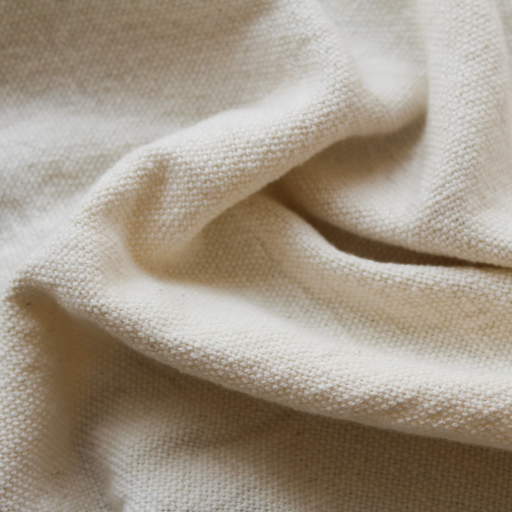
Compared to polyester, cotton is better for sensitive skin. It is softer and more breathable, reducing the chances of irritation, allergic reactions. Being natural, it helps to absorb moisture making the skin dry and comfortable. Polyester, on the other hand, is synthetic and traps heat in addition to moisture which can discomfort sensitive skins. Amongst people with sensitive skin, organic cotton is widely praised owing to its gentleness and non-irritable nature.
How Does Cotton Absorb Moisture Compared to Polyester?
The moisture absorption ability of cotton is due to its hydrophilic nature. In the case of cotton, its cellulose molecules create hydrogen bonds with water molecules. As a result, it can absorb as much as 24 to 27 times its weight. Because of this, cotton is able to manage moisture effectively by wicking it away from the skin and into the fabric.
On the other hand, polyester is hydrophobic, meaning it does not soak in water. Its synthetic fibers are structured to avoid moisture absorption surrounding sweat remaining on the epidermis, which prevents moisture retention but may give rise to the sensation of relative dampness. Inalayah fluids are capable of advanced polyester fabrics. Advanced polyester fabrics may provide some counterbalance to these shortcomings by incorporating some moisture-wicking technologies to counterbalance this defect. However, driven by superior absorbency and natural breathability, cotton specimens are comfortable even for prolonged periods of wear, which is often crucial in hot and humid conditions.
Which Fabric is More Breathable?
|
Key Parameter |
Cotton |
Polyester |
|---|---|---|
|
Moisture-wicking capability |
Low |
High |
|
Absorbency |
High |
Low |
|
Breathability |
Excellent |
Good with advanced treatments |
|
Comfort in warm conditions |
Superior |
Moderate to Good |
|
Drying time |
Slow |
Quick |
|
Durability |
Moderate (prone to wear) |
High (resistant to abrasion) |
|
Suitability for activewear |
Limited |
Excellent |
|
Insulation when wet |
Poor |
Moderate |
|
Environmental impact |
Biodegradable, less sustainable |
Non-biodegradable, recyclable |
When to Choose Polyester vs Cotton for Bedding?
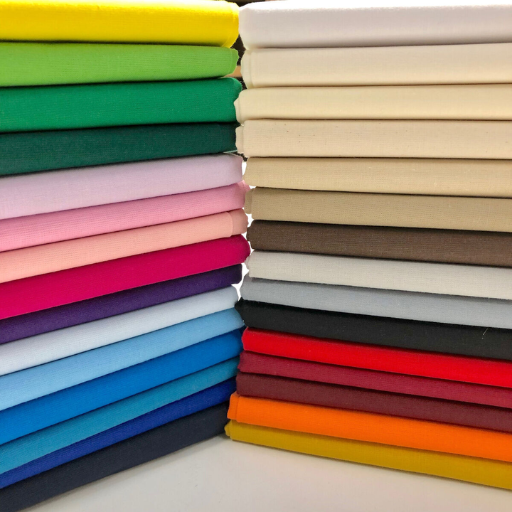
Choose Cotton Bedding When
- You value comfort and breathability during hot weather.
- You require a softer feel and natural texture for sleep.
- Concern revolves around environmental sustainability.
- Prefer bedding that is biodegradable and made from natural materials.
Choose Polyester Bedding When
- Softness is not as important as resistance to wear and durability.
- Requires low maintenance and quick-drying bedding.
- Designed for long-term use at a lower cost.
- Allergies or sensitivity to natural fibers are an issue.
Advantages of Cotton Sheets
- Breathability and Temperature Regulation
The heat and comfort of different temperatures range makes cotton sheets as the best to wear while their ability to breath is highly needed enables air to circulate easily. It is proven that the fiber can absorb 27 times its weight which greatly helps in Moisture wicking making sure the person sleeps dry, according to a study conducted by the International Textile Center.
- Softness and Comfort
While these sheets provide comfort due to the textile’s softness, they outdo materials such as polyester and other man-made textiles. Exceptional softness is experienced over time with high thread count cotton sheets made from Egyptian and Pima cotton, and softness is enhanced with washing.
- Durability and Longevity
Quality cotton sheets can endure heavy-duty friction for washing and will last for a long time. Research has shown that high-quality cotton not only has excellent tensile strength, but also withstands repeated frictional use, making it an ideal long-term investment as bedding.
- Hypoallergenic Properties
As an allergen and irritant, cotton is hypoallergenic, which renders it safe for users with sensitivities and allergies. Compared to synthetic fibers, dust mites and pollen would be more readily trapped by cotton due to its natural properties, thus promoting healthier sleep.
- Sustainability and Environmental Impact
Especially when sourced from properly managed organic farming practices, cotton is renewable and biodegradable. It also has a less negative impact on the environment than polyester does, throughout its lifecycle, from production to disposal. According to the Textile Exchange, organic cotton production has been shown to use 91% less water than conventional cotton which boosts its sustainable reputation further.
Due to the comfort, low maintenance, and the durability alongside sustainability makes it easy to understand why consumers greatly prefer cotton sheets.
Are Polyester Sheets a Good Option?
Polyester sheets have now become a common alternative due to their cheap price, long-lasting quality, and ease of care. Polyester, which is mainly derived from oil and processed into synthetic fibers, resists shrinkage as well as wrinkles, making it easy for many households. Recent research indicates polyester sheets tend go outperform natural fibers in durability tests and rubbing tests in maintaining structure and color. Even though these sheets have some benefits, polyesters also come with an environmental impact that can not be overlooked. The process of manufacturing them is costly in terms of energy, increasing greenhouses gases along with not biodegrading for decades, sitting in landfills. Furthermore, washing polyester sheets can release microplastics into marine water systems which raises other issues of marine pollution. Regardless of these setbacks, the advancements in technology like subsidized polyester made from post-consumer plastic waste is working towards lessening resource dependence while reducing the environmental impact.
What Are Blended Fabrics and Their Benefits?
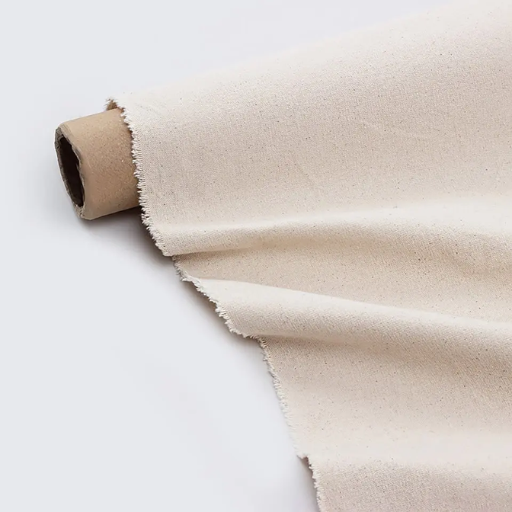
Blended fabrics are woven materials created through the integration of two or more yarns or fibers that work together in an efficient manner. A few examples would be polyester cotton mixtures or wool silk blends. These particular fabrics are made using the best properties of each fiber, for example, the comfort and softness of natural fibers along with the strength and wrinkle-free nature of synthetic fibers. The advantages of blended fabrics also include ease of use, increased durability, and lower overall cost for maintenance. In addition, they provide lower production costs by using with a combination of different fibers which makes them very useful in regard to clothing and home textiles.
What is a Cotton and Polyester Blend?
Cotton and polyester mix refers to a blend which contains 50% of each component, or 65/35. The blend also allows the natural cotton fibers and synthetic polyester fibers to be mixed in balance to achieve the desirable melting point, which serves a given purpose thereafter. This approach takes advantage of specific features of the fibers to develop one that has the desired level of comfort, strength, and adaptability. Each of these two fibers has specific advantages. Polyester adds to the strength and eases taking care of the fabric’s shape and wrinkle resistance. While cotton fibers soften the blend and make it breathable and easier to absorb moisture during sweating. A person feels more comfortable using the product in hot weather. Because they are practical, easy to care for, and inexpensive, blended fabrics are used for the production bedsheets, activewear, and t-shirts. Blended cotton fabrics offer comfort to the user while providing durability and long-term usefulness.
Advantages of Blended Fabrics
- Enhanced Durability
Fabrics made with polyester and cotton have been blended to improve their strength features. Cotton adds softness to the fabric, which polyester strengthens and increases its wearability. They can withstand repeated laundering and wearing much better than pure cotton fabrics: research shows up to 50% longer lifetime when made of cotton-polyester blends.
- Improved Wrinkle Resistance
The best garments are created from blended fabrics since they do not easily get unsightly creases. This is thanks to synthetic stretchy materials such as polyester which minimizes damages caused by pressure. For this reason, such textiles are great for everyday clothes and
- Moisture Management
Blended materials containing polyester are crucial for activewear due to its moisture-wicking capabilities. These variants keep sweat away from the body enabling the user to stay dry and comfortable. Compared to pure natural fabrics, polyester blends are way better as they reduce moisture buildup by 30%.
- Cost-Efficiency
Natural fabrics like 100% silk or cotton are much more expensive than blended ones. Bended fabrics are lower in price because of the synthetic fiber’s reduced overall production costs while achieving a certain level of quality feat. For this reason, blended materials are more preferable in mass production.
- Versatile Applications
The soft and flat features of cotton poufs make it a useful treat for firming sill cushions features and canvas available for painters curtains. Blended fabrics are used in advanced materials such as t-shirts. The distinct flat form changed this clothing segment and determined development of functional clothing for professional usage.
With these benefits of blended fabrics, there is no doubt why they are the most reliable option for fashion and industrial purposes. These materials provide innovative options for manufacturers looking to decrease spending while increasing functionality.
Reference Sources
-
Comparison of Comfort Properties of Jersey and Interlock Knits in Polyester, Cotton/Spandex, and Polyester/Rayon/Spandex: The study analyzed the impact of fabric thickness and weight on comfort properties like air permeability, bursting strength, thermal insulation, and evaporative resistance.
-
Predicting Sewing Thread Consumption for Chainstitch Using Regression Model: This study developed regression models to predict sewing thread consumption for cotton and polyester-cotton core-spun threads.
-
Improved Comfort Polyester: Part I: Transport Properties and Thermal Comfort of Polyester/Cotton Blend Fabrics: The study found that cotton fabrics are generally thicker and less porous than polyester, contributing to better liquid water transport.
Frequently Asked Questions (FAQs)
Q: Is polyester thicker than cotton?
A: The thickness of a fabric can vary based on its weave and the specific type of fabric. Generally, polyester is not inherently thicker than cotton; it depends on the specific fabric construction.
Q: What are the differences between polyester and cotton?
A: Polyester is a synthetic fiber, while cotton is a natural fiber derived from the cotton plant. Polyester tends to be more durable, while cotton is typically softer and more breathable.
Q: Which is better for bed sheets, polyester or cotton?
A: Cotton is often preferred for bed sheets due to its breathability and comfort. However, polyester bed sheets are usually cheaper than cotton and can be more wrinkle-resistant.
Q: Is cotton more breathable than polyester?
A: Yes, cotton is more breathable than polyester. This means that cotton garments are better at allowing air circulation, making them more comfortable in hot weather.
Q: Can people with sensitive skin wear polyester garments?
A: People with sensitive skin may find that polyester doesn’t irritate their skin as much as some other synthetic fibers, but it can still cause discomfort for some. Cotton garments are often recommended for those with sensitive skin due to their softness.
Q: How does the durability of polyester compare to cotton?
A: Polyester is generally more durable than cotton and can withstand wear and tear better. It also dries faster than cotton, making it ideal for activewear.
Q: What percentage of polyester is common in blended fabrics?
A: Common blends can vary, but many fabrics labeled as “cotton blend” may contain a percentage of polyester, often ranging from 10% to 50%, depending on the desired characteristics.
Q: Are polyester fabrics warmer than cotton?
A: Polyester fabrics can be warmer than cotton in some applications, especially when used in insulation layers. However, cotton is generally cooler and more comfortable for everyday wear.
Q: Is recycled polyester a good option for environmentally conscious consumers?
A: Yes, recycled polyester is a sustainable option as it is made from post-consumer plastic waste. It helps reduce waste and the environmental impact associated with producing new polyester.
Q: What’s the difference in maintenance between polyester and cotton?
A: Polyester is often easier to maintain as it is less prone to wrinkling and shrinking compared to cotton. Cotton may require more careful washing and ironing to maintain its appearance.









